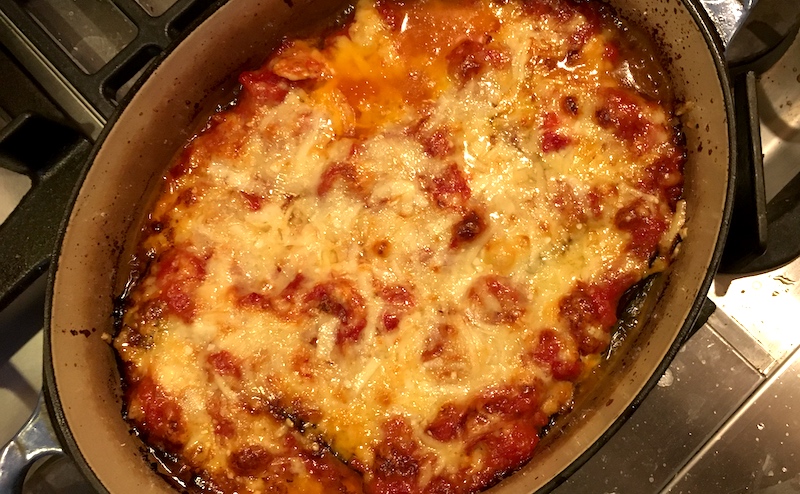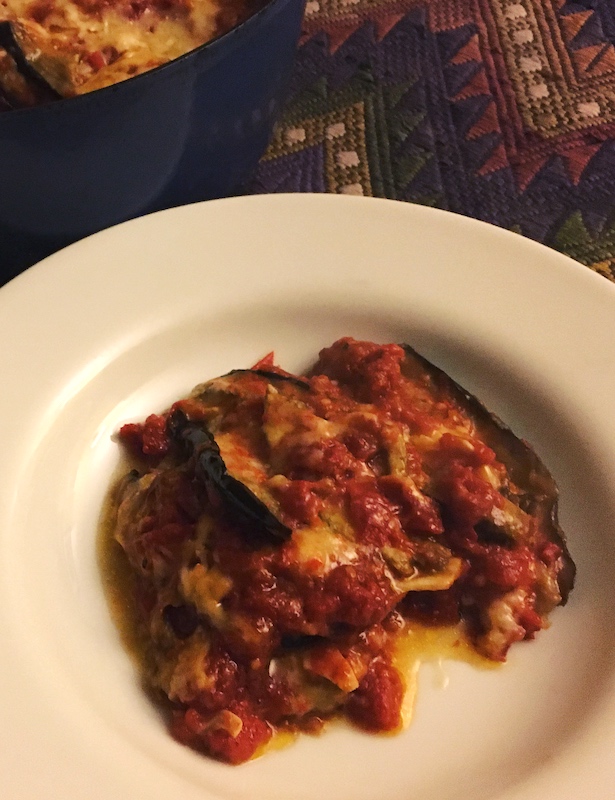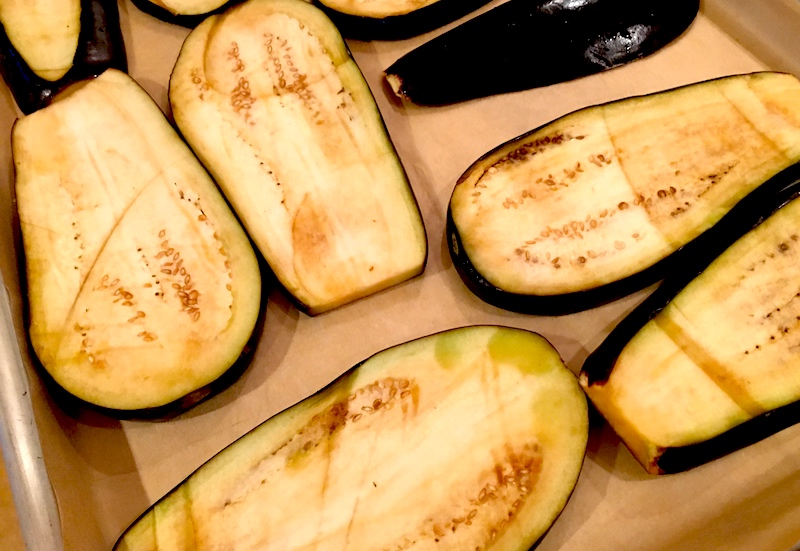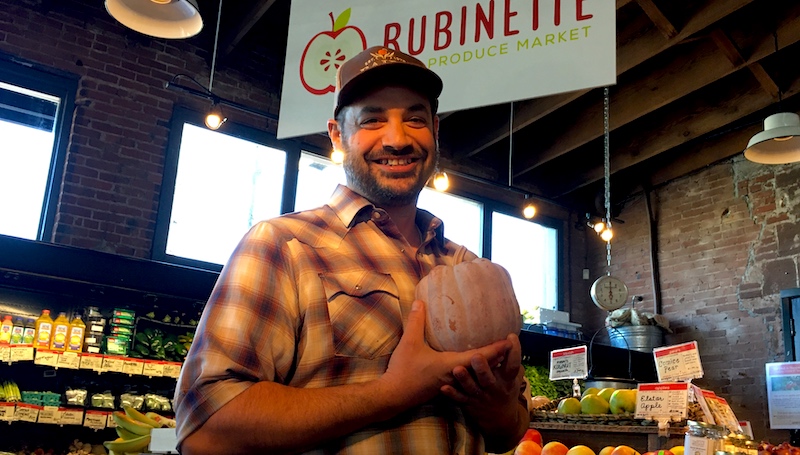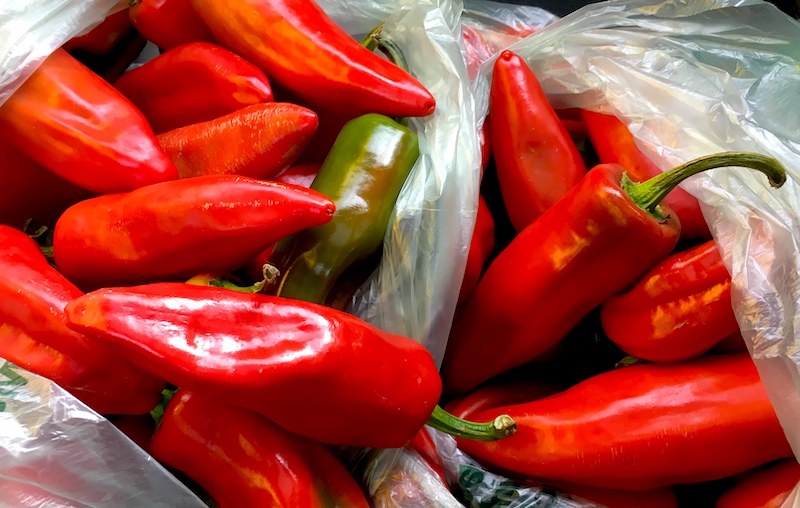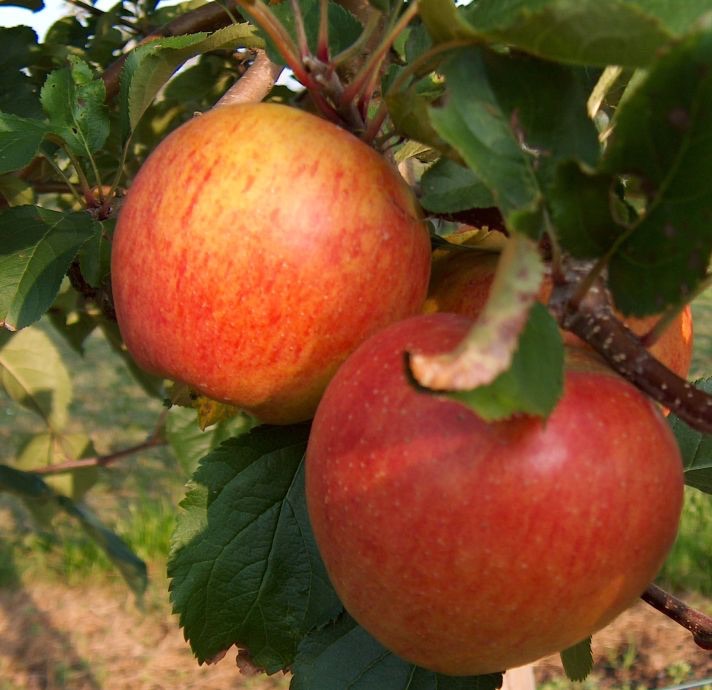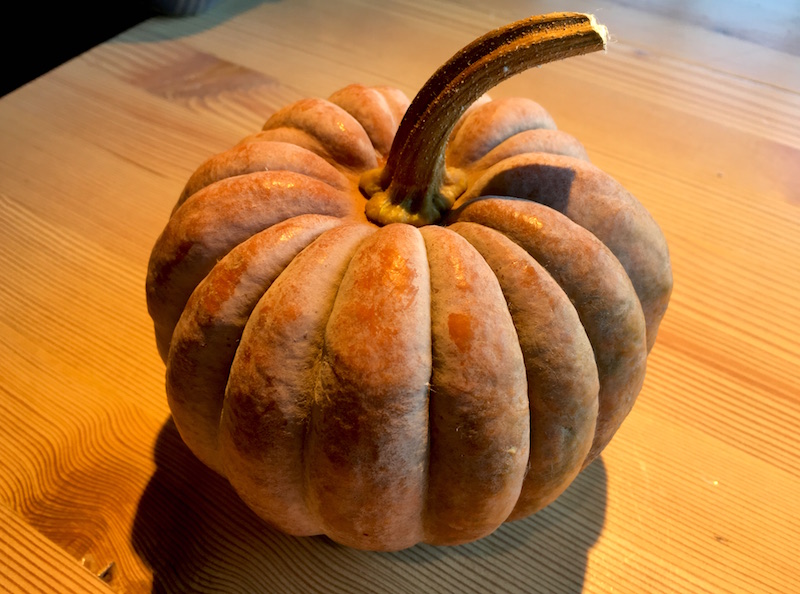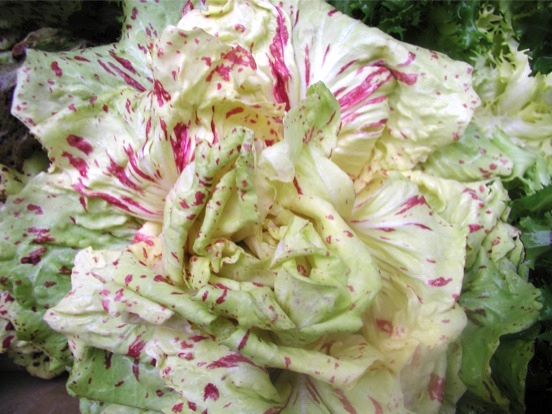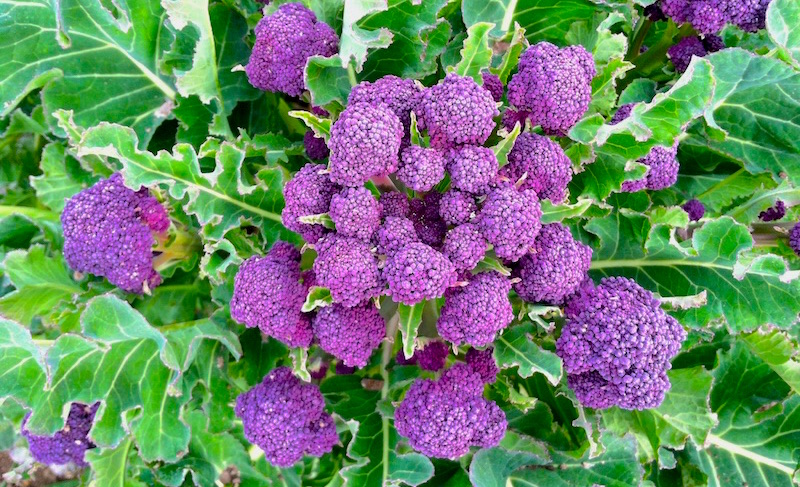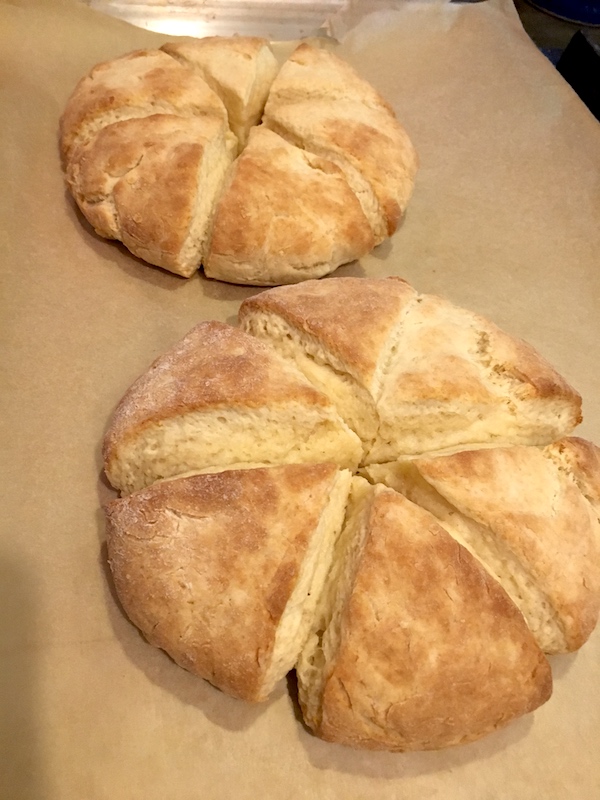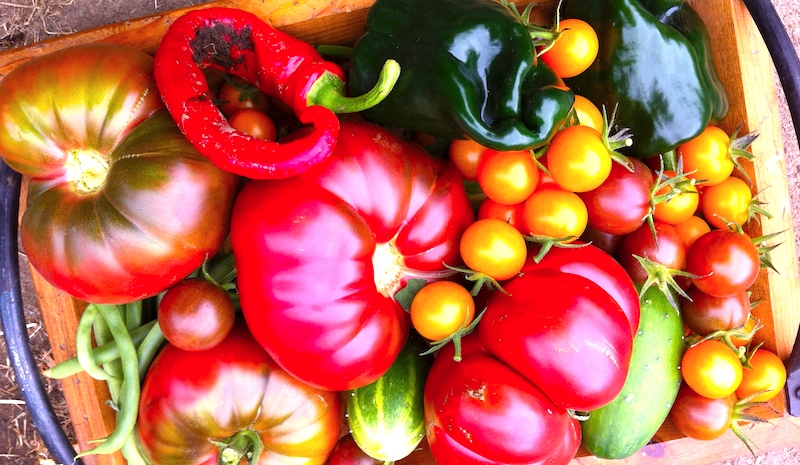
In Season: Hot Fun in the Summer Sun!
It may have been prescience that inspired me to check in with Josh Alsberg of Rubinette Produce to get the skinny on what to expect from local farms and producers in the coming weeks. After all, the wet, cool spring had delayed many of the region's spring crops and even flooded out whole fields of emerging vegetables on some farms, which then made it difficult to get tractors into the fields to replant, being as they got mired up to their axles in the saturated ground. Yikes!

According to Alsberg, it's meant the season for many fruits and vegetables is two to four weeks behind what we would consider normal—helloooo climate change. For instance, he pointed out that the three-week season for marionberries and boysenberries would usually peak around July 4th but this year they were hitting their stride on July 25th and will be done around the end of the month.
Stone fruit is experiencing a great summer, with peaches, apricots and nectarines pretty much on time and readily available—he said to expect peaches to be available through September. Alsberg said this year's gigantic blueberry harvest is "off the hook" and the flavor has been stellar, with local bloobs sticking around through the end of August. Despite a major area grower quitting the business, cherries have been relatively abundant, though you'll see them evaporating like a morning mist within a week or so.
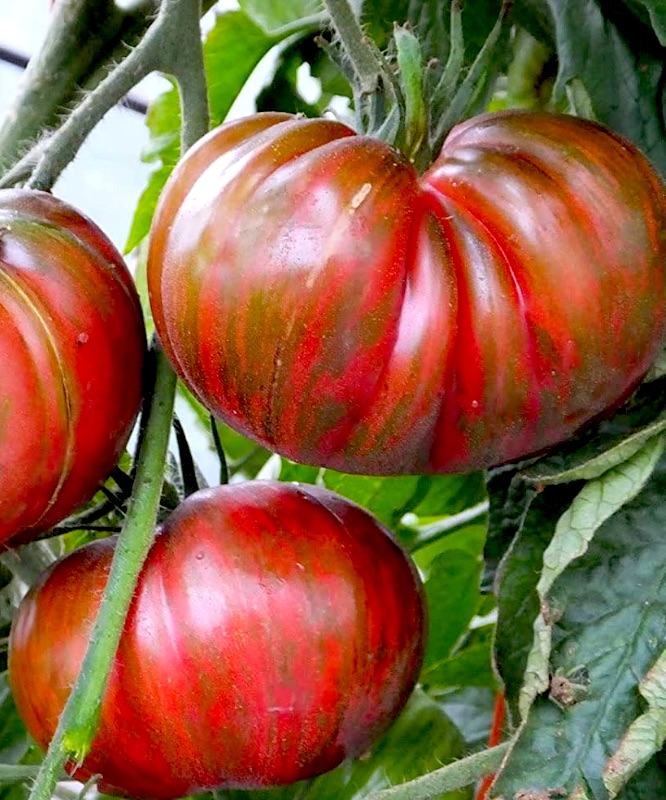
Tomatoes, while also delayed, have been appearing and Alsberg is particularly excited about some new heirloom varieties like Marvel Stripe and Berkeley Tie-Dye (right), along with reliable standbys like Purple Cherokee, German Stripe and Brandywine. Look for sky-high stacks of summer squash—think zucchini, costata romanesco, crookneck and more—on farmers' market tables, along with cukes of all kinds for salads, hot and cold soups, pickles and lots more.
Local corn and peppers are already making an appearance—personally, I'm looking forward to making salsa verde and fermenting my own hot sauce again this year. Lettuces will be struggling in the heat, but brassicas like kales, cauliflower and broccoli are able to withstand a certain level of blistering summer temps. Alsberg said the bean crop, including string, bush, and pole, are looking good, and I'm excited to pick up both meaty romano beans and dragon's tongue shelling beans on my next trip to the market.
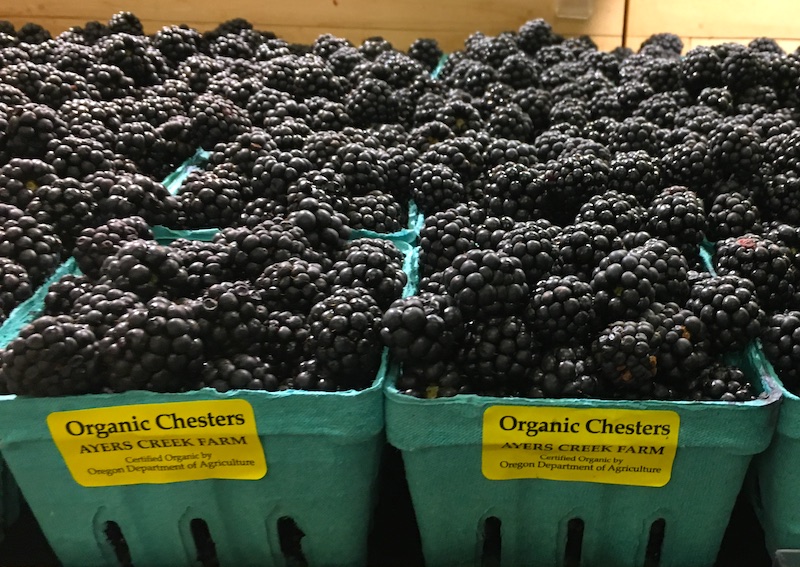
For those mourning the loss of Ayers Creek Farm and its famous Chester blackberries, Alsberg assures us there will be Chesters available from other local sources along with his personal favorite Triple Crown blackberries, so ask at your farmers' market. There are also local growers cultivating descendents of Ayers Creek's Astiana tomatoes—as Anthony and Carol did when they brought the original seeds here from Italy's Piedmont—though the new paste tomatoes may be appearing under a different alias. Again, always ask!
Photo of Berkeley Tie-Dye tomatoes from Fruition Seeds.

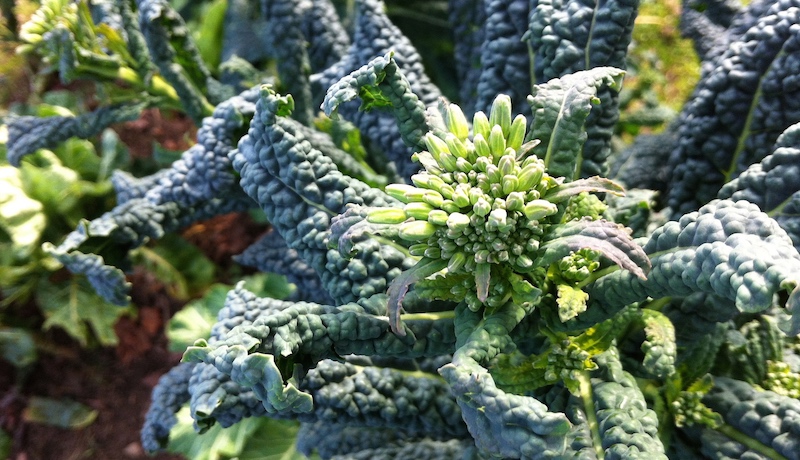
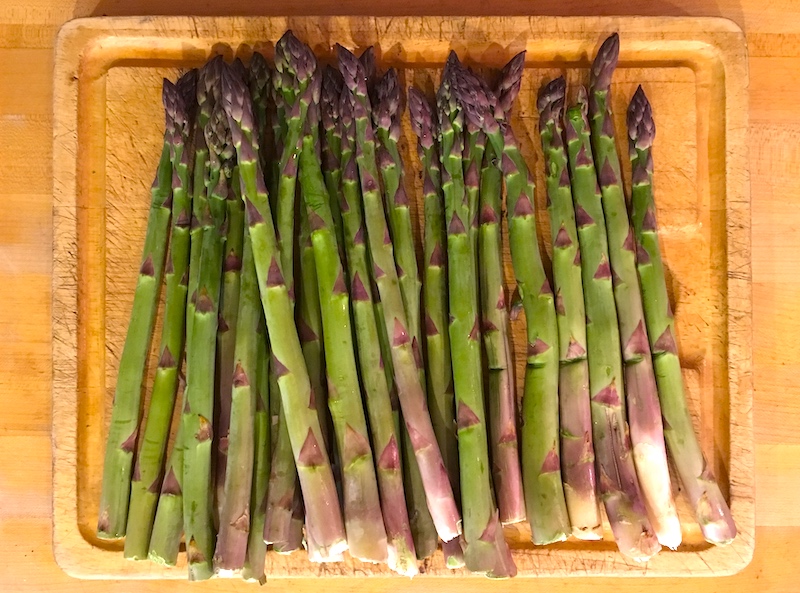 As is my habit at the beginning of every season, I called on Josh Alsberg of
As is my habit at the beginning of every season, I called on Josh Alsberg of 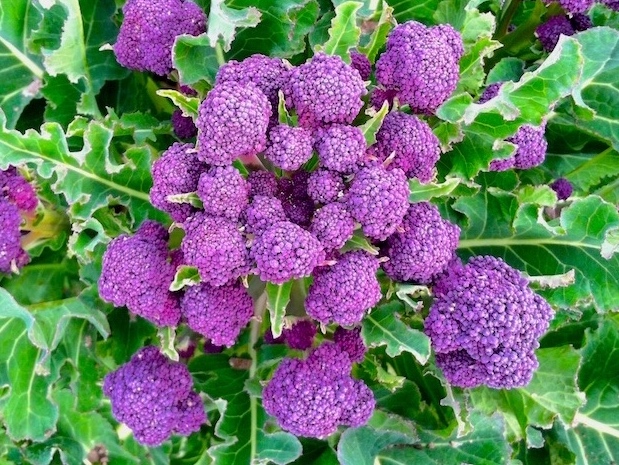 In addition to green asparagus, the purple version will also be available, along with purple sprouting broccoli—aka PSB—an overwintered crop that is planted in the fall. Like many purple-tinged vegetables, the color will disappear if it's boiled or steamed so, next to serving it raw, either roasting or sautéing is your best bet for retaining that gorgeous color.
In addition to green asparagus, the purple version will also be available, along with purple sprouting broccoli—aka PSB—an overwintered crop that is planted in the fall. Like many purple-tinged vegetables, the color will disappear if it's boiled or steamed so, next to serving it raw, either roasting or sautéing is your best bet for retaining that gorgeous color.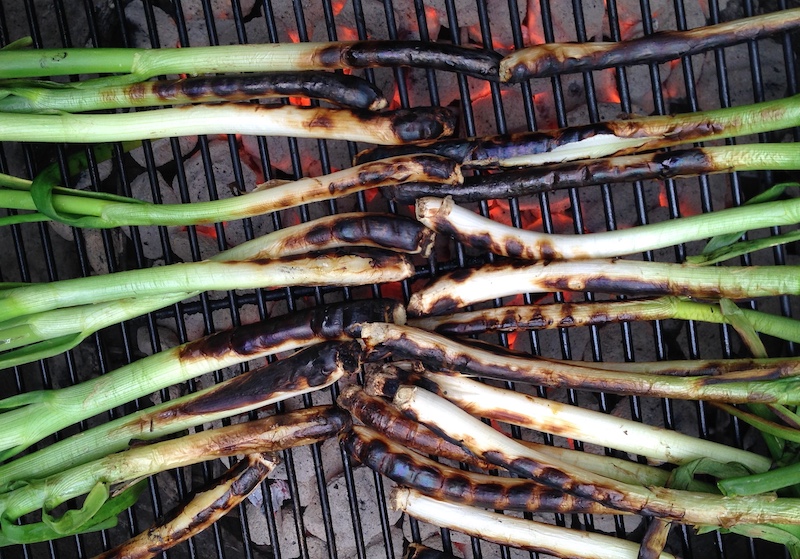 Alsberg notes that spring alliums are appearing on local farms' lists, so start pulling out your recipes for green garlic, spring onions and their Spanish cousins, calçots (left). (Get a recipe for
Alsberg notes that spring alliums are appearing on local farms' lists, so start pulling out your recipes for green garlic, spring onions and their Spanish cousins, calçots (left). (Get a recipe for 
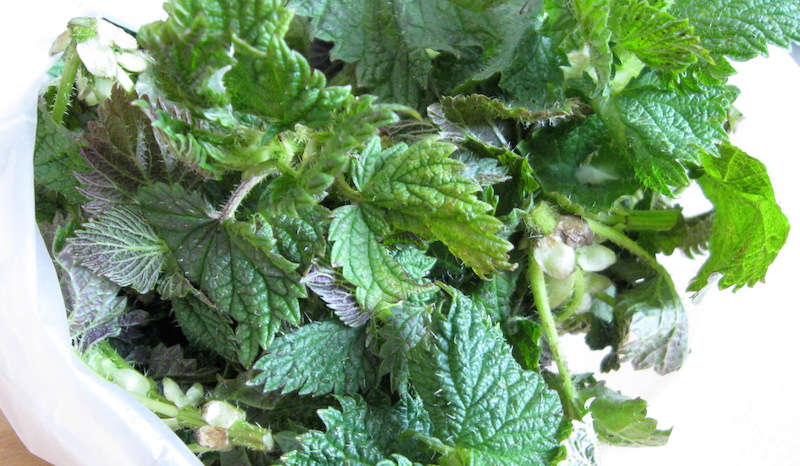
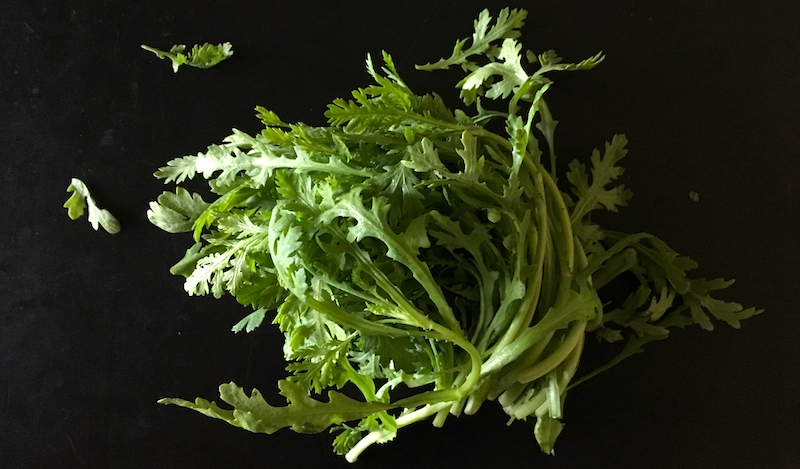
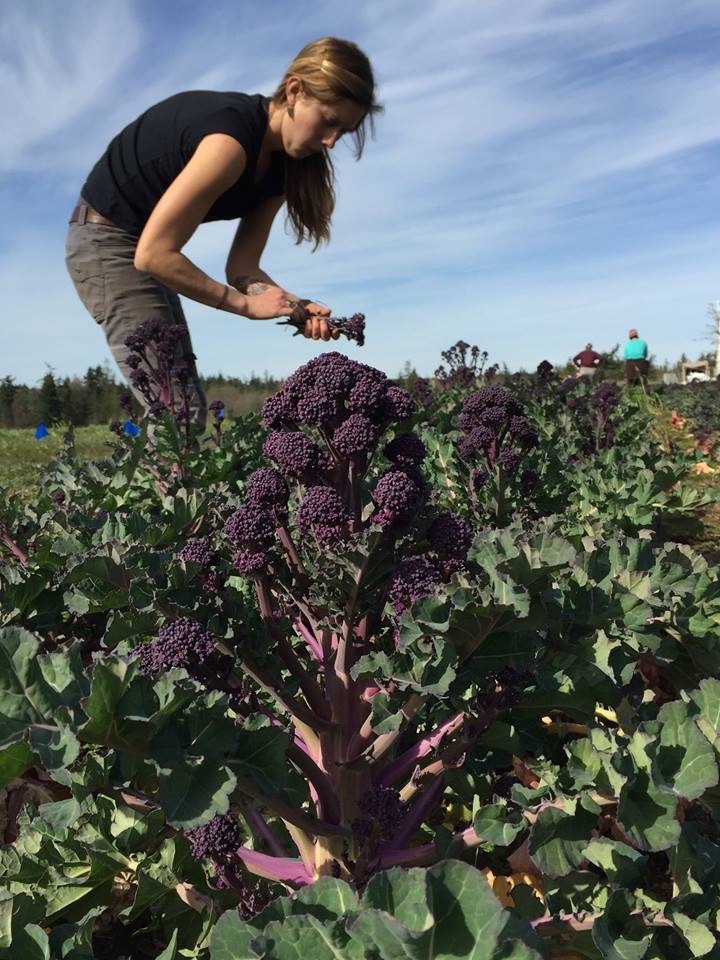
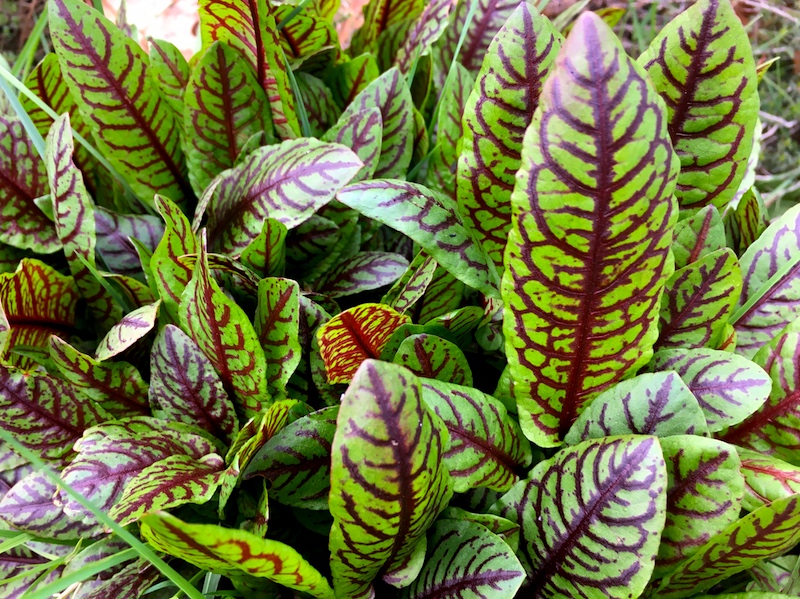
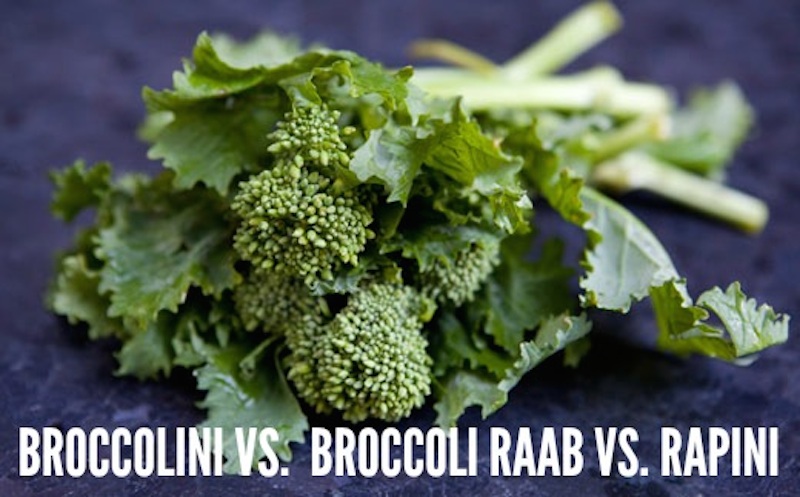
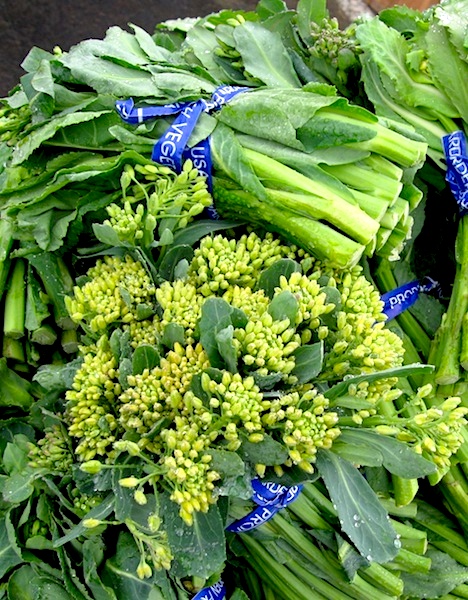
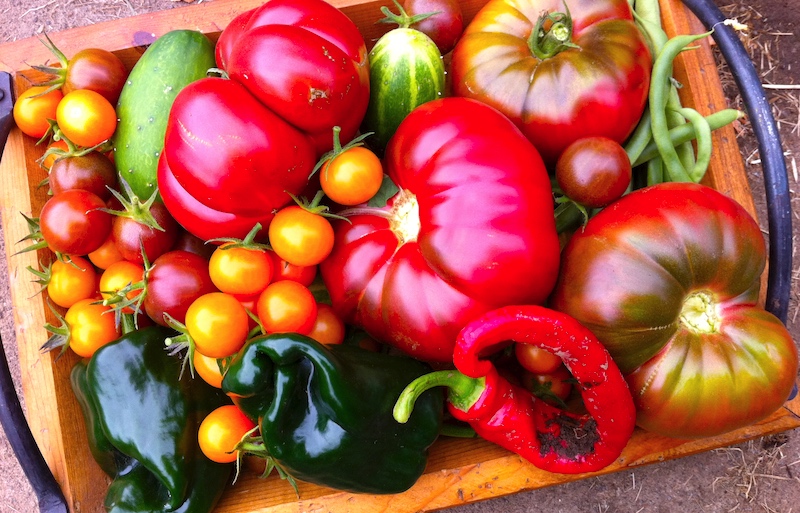
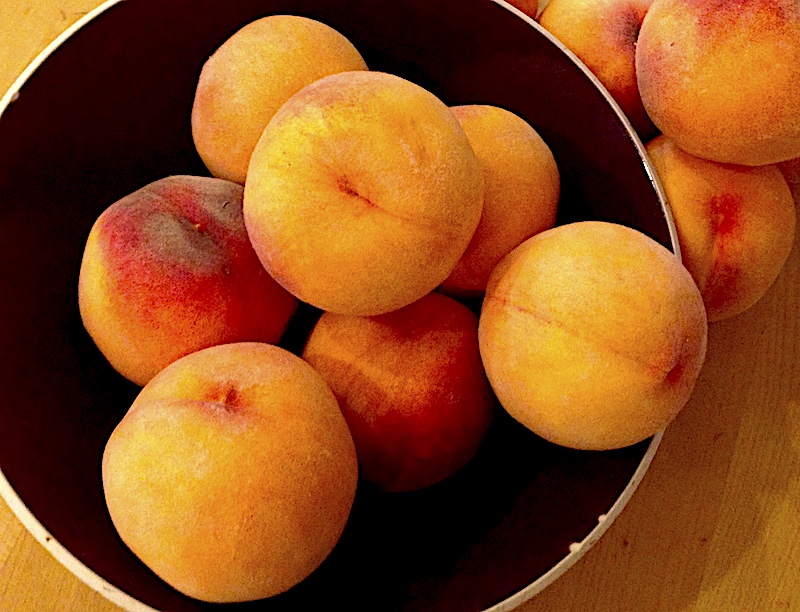 The time is now to get your heirloom tomatoes at the farmers' markets, and there's a plethora of peppers, eggplant, beans, corn and peaches tumbling in from local farms. Strawberries and cane fruit like raspberries and blackberries are nearly done, as are summer squash and cucumbers, so if you haven't got around to making your grandma's favorite dill pickles yet, you'd best get cracking.
The time is now to get your heirloom tomatoes at the farmers' markets, and there's a plethora of peppers, eggplant, beans, corn and peaches tumbling in from local farms. Strawberries and cane fruit like raspberries and blackberries are nearly done, as are summer squash and cucumbers, so if you haven't got around to making your grandma's favorite dill pickles yet, you'd best get cracking.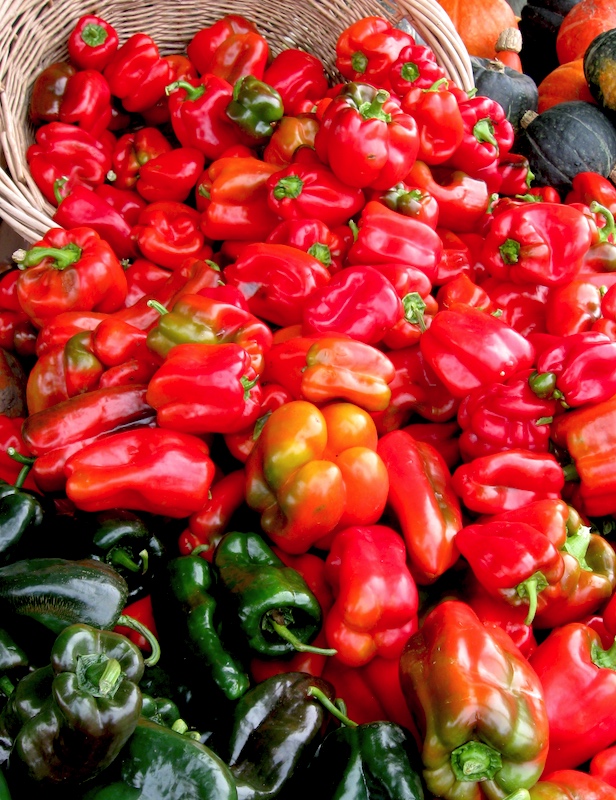 "It's been kinda strange," he said, recounting cooler temperatures early in the summer that got everything off to a late start, with some early crops experiencing a short, not-very-robust season. Tomatoes were delayed early on, and then 100-degree days like those we've had lately "put the kibosh" on some varieties that are normally prolific in midsummer, so expect a slightly shortened season.
"It's been kinda strange," he said, recounting cooler temperatures early in the summer that got everything off to a late start, with some early crops experiencing a short, not-very-robust season. Tomatoes were delayed early on, and then 100-degree days like those we've had lately "put the kibosh" on some varieties that are normally prolific in midsummer, so expect a slightly shortened season.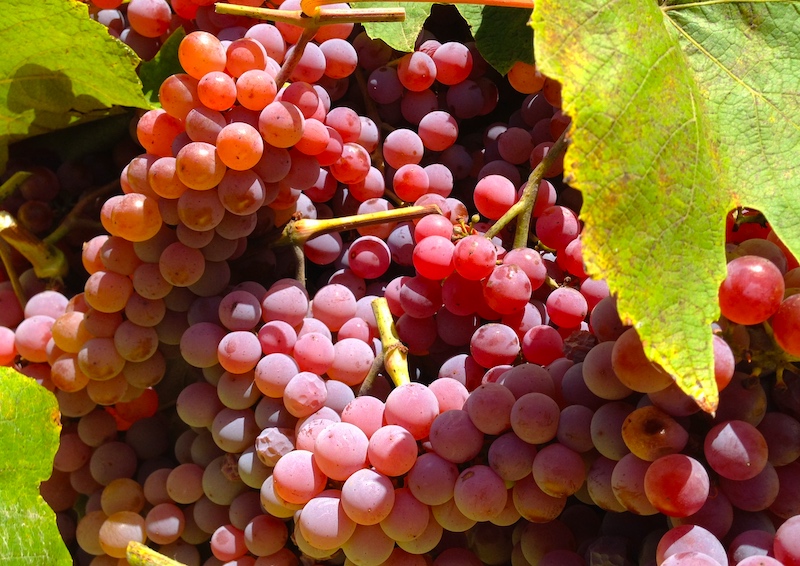 Plums and table grapes are just getting started, as are local melons, and kiwi berries and ground cherries should start appearing soon. We can also look forward to freshly dug potatoes and onions by the end of the month, as well as winter squash like delicata and butternuts. Local apples and pears will be arriving from orchards by the end of September, though Alsberg said he's seeing a few local Gravensteins listed on his farmers' hot sheets, along with Zestar, Ginger Gold and Pristine varieties.
Plums and table grapes are just getting started, as are local melons, and kiwi berries and ground cherries should start appearing soon. We can also look forward to freshly dug potatoes and onions by the end of the month, as well as winter squash like delicata and butternuts. Local apples and pears will be arriving from orchards by the end of September, though Alsberg said he's seeing a few local Gravensteins listed on his farmers' hot sheets, along with Zestar, Ginger Gold and Pristine varieties.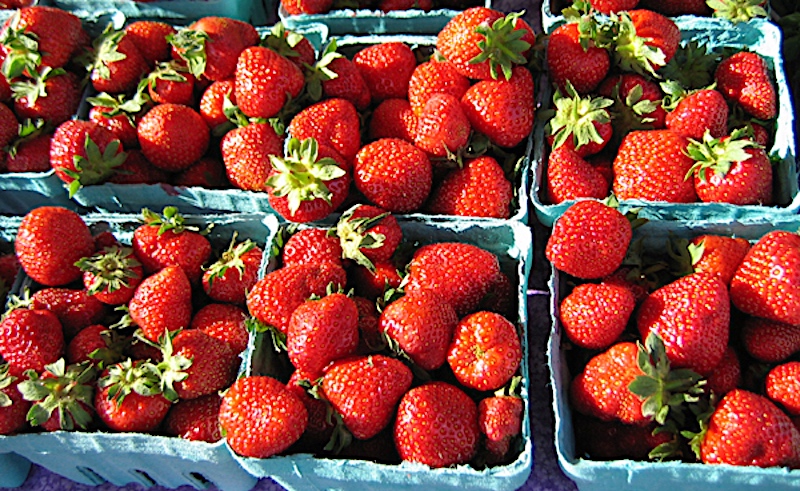
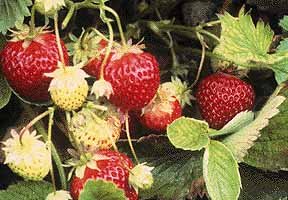
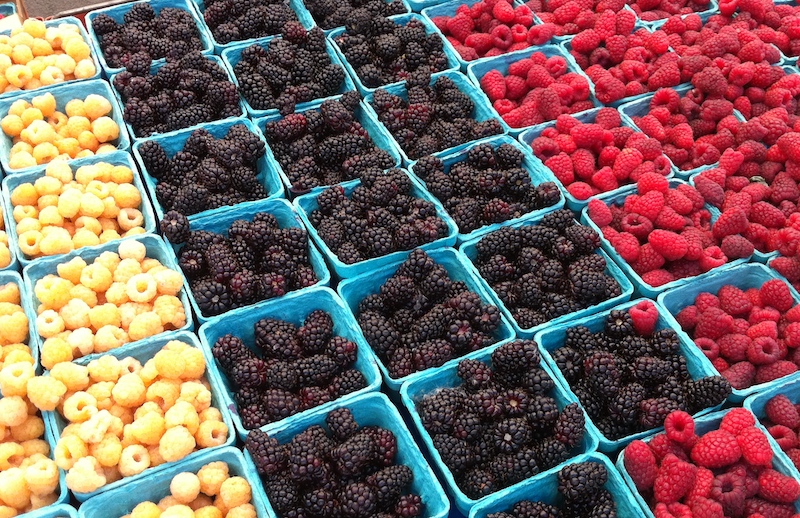
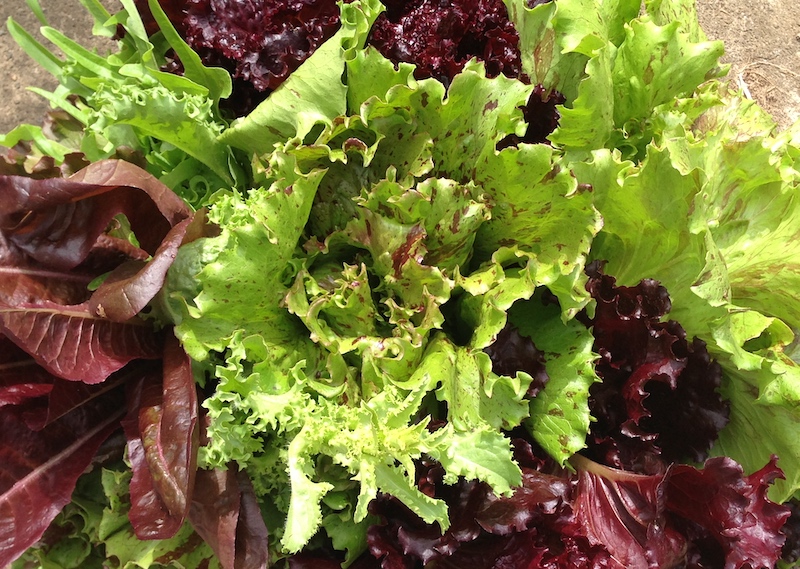
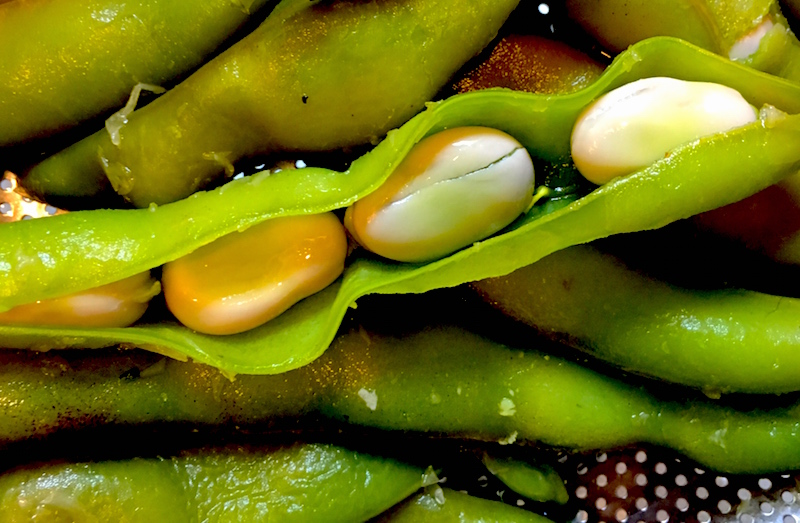
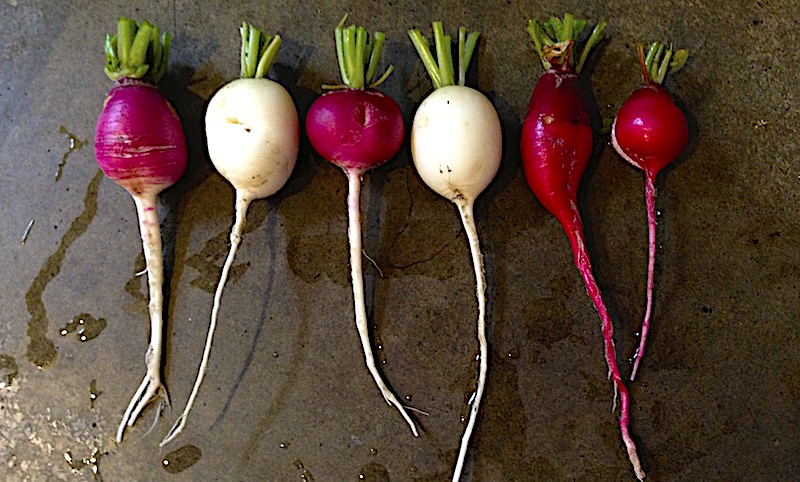
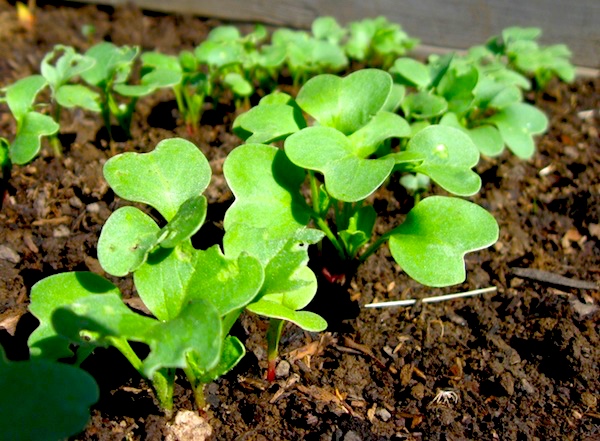 Spring is definitely one of them. Flowers blooming, trees leafing out, good things to eat emerging from the ground and beginning to come in from local farms. Which is why I wanted to check in with Josh Alsberg at
Spring is definitely one of them. Flowers blooming, trees leafing out, good things to eat emerging from the ground and beginning to come in from local farms. Which is why I wanted to check in with Josh Alsberg at 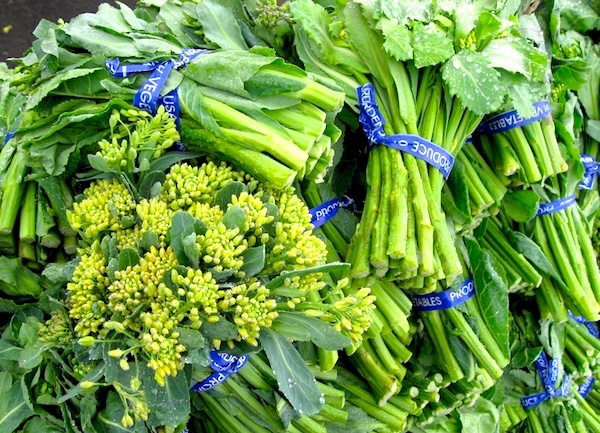 Alsberg also suggested that getting a CSA share from one of our outstanding local farms is a good way to get the freshest seasonal produce, support farms and reduce handling issues. (Go to the
Alsberg also suggested that getting a CSA share from one of our outstanding local farms is a good way to get the freshest seasonal produce, support farms and reduce handling issues. (Go to the 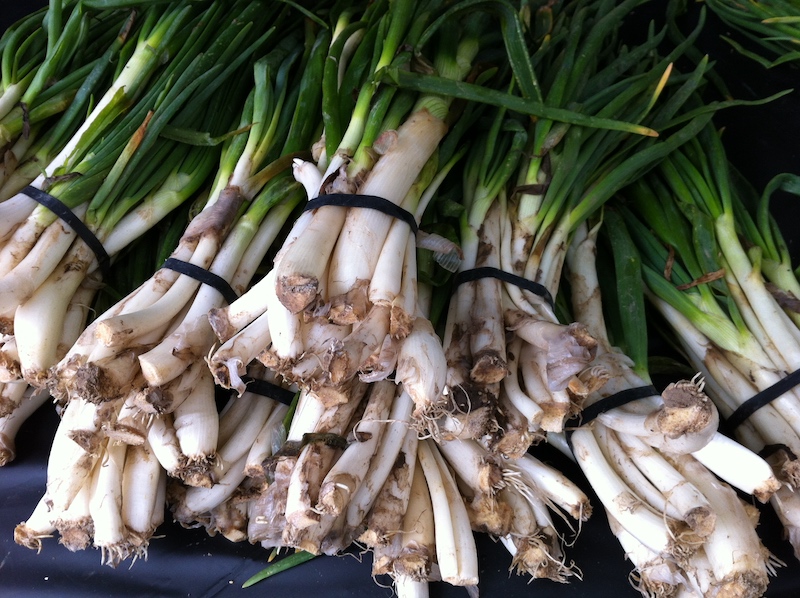 All of the alliums and wild onions, as well as green garlic, spring onions and the Spanish type called calçots (left)—meant to be grilled and served with a
All of the alliums and wild onions, as well as green garlic, spring onions and the Spanish type called calçots (left)—meant to be grilled and served with a 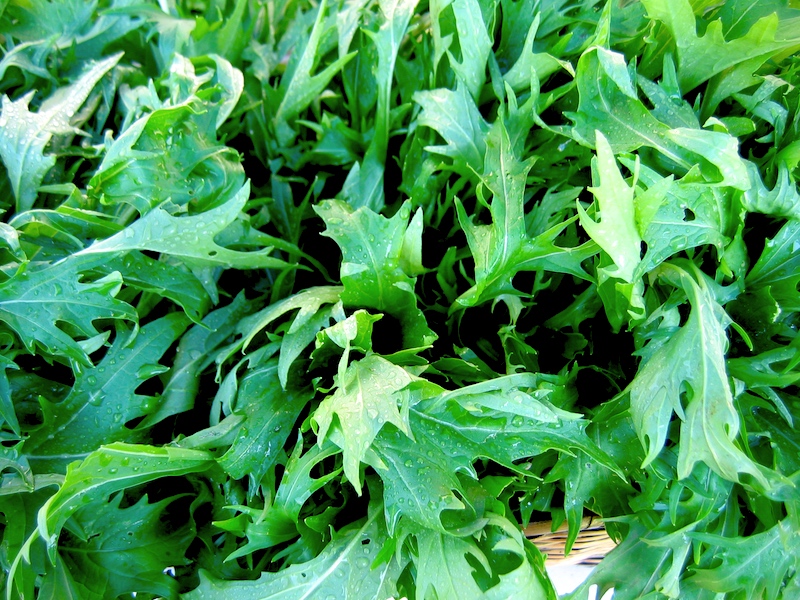 And for nutrient-dense greens, you can't do better than hearty spring greens like arugula, dandelion greens, spinach and early lettuces so fresh they practically vibrate.
And for nutrient-dense greens, you can't do better than hearty spring greens like arugula, dandelion greens, spinach and early lettuces so fresh they practically vibrate.